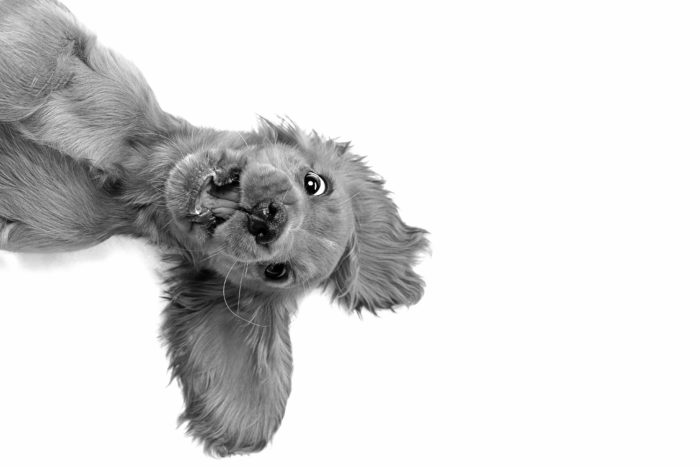
Fluffy SIT! SIT! SIT! STAY Fluffy! SIT, STAY!
Do you ever have trouble getting your new puppy to sit still for a photo? Unless they are sleeping or chewing it seems like they are on the move. If you are feeling frustrated with your pup’s poor performance you may be too focused on static behaviors like sit and stay and then there is the holy grail of behaviors, walk nicely on the leash, a puppy’s Achilles heel. Pun intended.
These behaviors can certainly be helpful in many situations and you may decide to spend time and energy teaching your dog to be able to do them; but they aren’t what I call ‘puppy friendly’. Especially leash walking and stay.
It is worth understanding that your pup’s education will take time and patience. In addition it will require some know-how and decent attention to details on your part. Here are three tips to help you move your puppy raising strategy from frustrating to fantastic.
Tip 1 – Pay attention to the environment you create for your puppy to learn in.
- Provide the necessary structure early on, this will also help prevent some common problems from developing. Use crates, gates and leashes.
- Clock watch. After about 15 to 20 minutes of activity a puppy may need a nap.
- Teach new behaviors at home with limited distractions. Gradually increase distraction, practice ‘dress rehearsals’.
- Kids? Be sure that interactions are well supervised.
Tip 2 – Pay attention to the important foundation concepts & skills.
Without a foundation your puppy is left emotionally and behaviorally weak and vulnerable. He is like a home with a compromised foundation. Without a foundation you don’t have anything to build on to teach those sought after ‘life skills’.
Important foundation concepts for you to understand and attend to include; socialization, prevention and enrichment.
Foundation skills such as offering attention (eye contact), and targeting should not be underestimated.
Understanding and attending to these concepts and skills provides you and the dog with a greater chance of advancing successfully to next level moves.
Tip 3 – Keep it puppy friendly.
If the word ‘training’ evokes visions of toil and sweat and sends shudders down your spine you are not alone. Lots of people have an image in their mind of drills and big balls of no fun. This need not be the case.
A student recently asked me after a portion of class if what we just did was considered training or play. What a great question! What I was coaching them on felt so upbeat and fun they thought this can’t be ‘training’.
- Keep ‘training’ sessions short, fast and fun. Sprinkle games of tug and find it into the mix.
- When out and about with your puppy stop for a chew or a shred. Bullie sticks for chewing or small brown paper bags for shredding are good picks. To make a puppy piñata simply toss a handful of your puppy’s favorite treats in the bag. Poke a few holes for a beginner. Both options are a great go-to on the move for a quick ‘break from it all’.
- Focus on dynamic behaviors like chase or hand target. Keep sits and downs on short durations to start.
- Take the pressure off! We would not expect a pre schooler to sit through and understand a university professor’s lecture. Ideally these children are exposed to fun, enriching activities, mixed with the chance to run around and to nap. Keep this picture in your mind as you tend to your pup’s early education.
Happy Puppy Raising!

